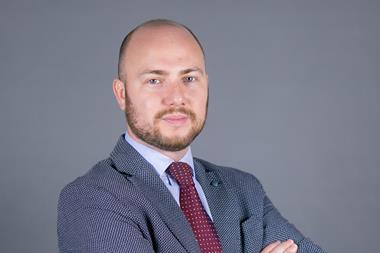No organisation can be without risks, so risk managers must use decision analysis to ensure that they are asking the right questions and taking the right risks, says Hans Læssøe, the founder of AKTUS and former risk manager at The Lego Group
“I firmly believe that uncertainties are facts of life, so you may as well learn how to leverage them, utilise them and benefit from them – rather than being afraid of them,” said Hans Læssøe, the founder of AKTUS and former risk manager at The Lego Group.
He was delivering a workshop to the audience of Risk Awareness Week 2019, looking at how risk managers can optimise their decision values.
Læssøe pointed out that most risk management standards, including ISO 31000 and COSO agree that risk management must influence decision-making otherwise “it’s a waste of time”.
He argued that no organisation can be without risks, so risk managers must use decision analysis to ensure they are asking the right questions and taking the right risks.
Læssøe continued: “There is no such thing as taking no risks. Whether you decide to one way or the other way or not go at all, you always take risks. You always pursue opportunities and develop risk culture into a positive winning culture. This is worth a lot to an organisation.”
He argued that there are two elements of a decision: what to do and how do we do it. He said organisations need to focus on the ‘how to do it’ element, because although there is a safe way to approach every task, that might not always be the one that is most closely aligned with an organisation’s risk appetite or goals.
He explained that when risk managers perform prioritisation exercises, it is important to do it within the context of the company’s risk appetite. They need to understand how much risk the company is prepared to take.
This way, Læssøe says, risk managers can optimise value by taking as much risk as they can with as profitable outcomes as possible.
He recommends using the TIPA approach:
- Targeting – what do you want to achieve? What does success look like?
- Identification – What may affect you missing or exceeding your objectives?
- Prioritising – what you choose to act on and how
- Action – executing you decisions
Once there is a clear decision-making framework, the next important step is to embed it within the organisation’s culture, so that everyone is making smart risk-analysed decisions.
Læssøe says that culture defines ‘how we do things here’. It’s the way things have always been done, and that people new to the organisation will eventually know what that means.
Læssøe concludes: “If your company is systematic on optimising decision and value by embedding the TIPA model and risk thinking and the modelling and the Monte Carlo simulation into major decisions that will influence the entire organisation and become how we do things here.
“Nobody will even consider jumping the fence, because we know this is the way we do things here and we’ve gotten accustomed to it and we see the value of it over and over again.”
He added: “Doing that gets you a winning culture based on intelligent risk taking. You cannot avoid the risk taking, so you might as well leverage it, be intelligent about it, know how to do it. And how do we implement that? Three words – consistency, consistency, consistency.
“If you always push for it, if the steering committee of every project asks for that risk profile, if the executives for every decision materially requires that you asks for the risk profile and how its embedded and what has been done then, it will be done.
“If it’s not asked for it will not be done. It will simply flatly be forgotten and there is no value to it.”
To view Læssøe’s full workshop, click here: https://2019.riskawarenessweek.com/talks/risk-based-scheduling-and-planning-1/




















No comments yet